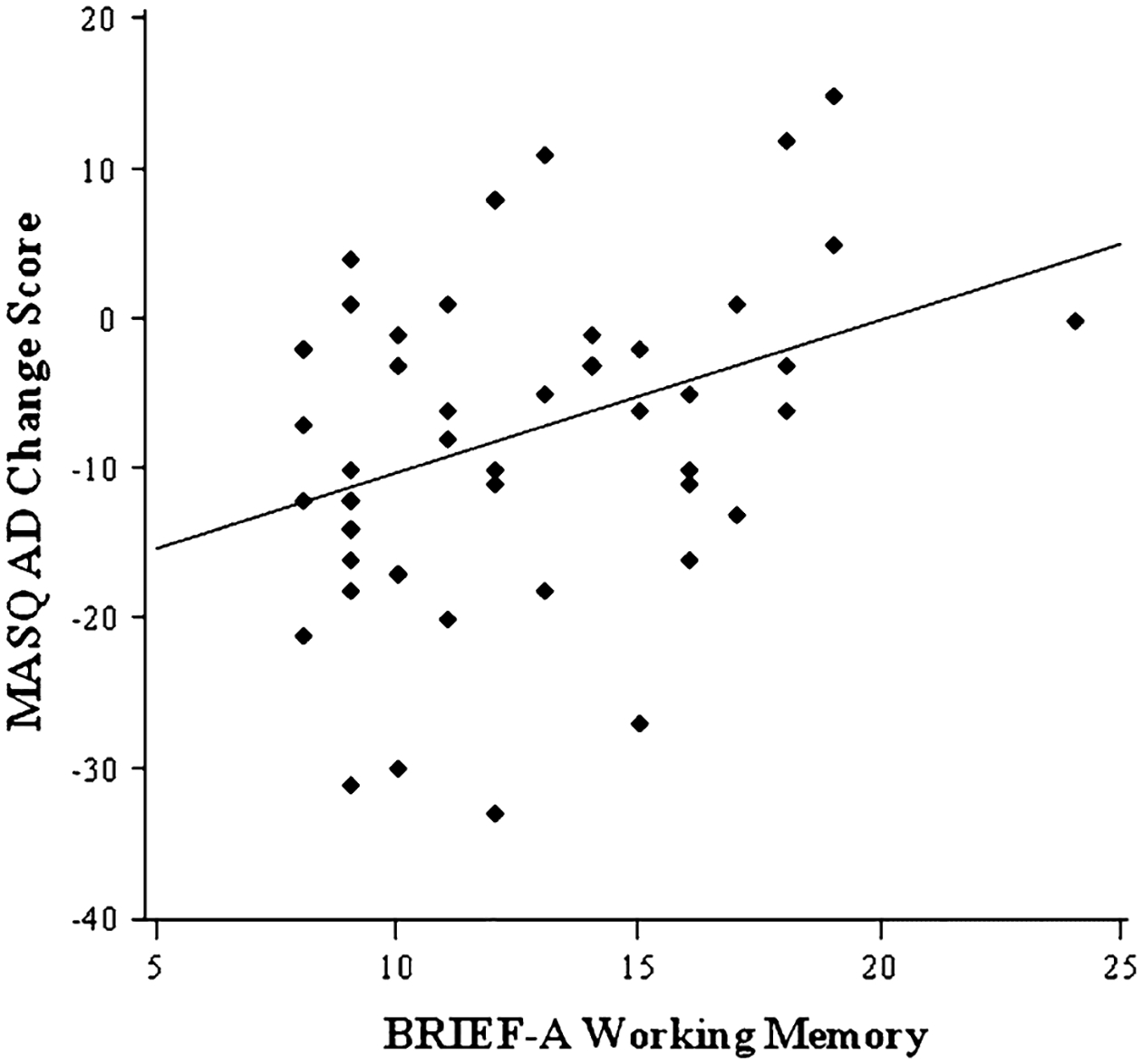Fig. 1.

Scatterplot showing the association between working memory (WM) scores and anhedonic depression (AD) change scores. Higher WM scores represent worse self-reported WM, and positive Mood and Anxiety Symptom Questionnaire AD (MASQ-AD) change scores represent an increase in depressive symptoms from time 1 to time 2
